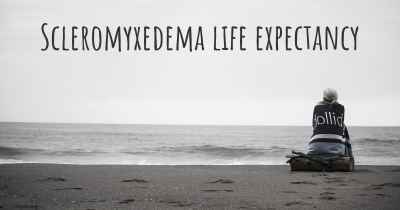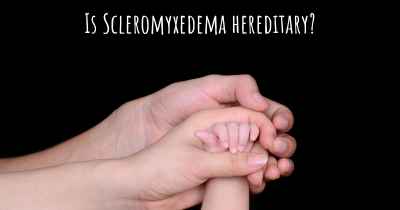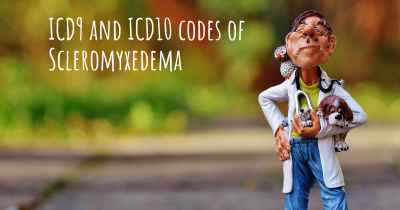How is Scleromyxedema diagnosed?
See how Scleromyxedema is diagnosed. Which specialists are essential to meet, what tests are needed and other useful information for the diagnosis of Scleromyxedema

Scleromyxedema is a rare skin disorder characterized by the deposition of mucin in the skin and the presence of fibrosis. It is often associated with systemic manifestations such as thyroid abnormalities, neurological symptoms, and other organ involvement. Diagnosing scleromyxedema can be challenging due to its rarity and similarity to other skin conditions. However, a combination of clinical evaluation, laboratory tests, and skin biopsies can help in reaching a definitive diagnosis.
Clinical Evaluation: The initial step in diagnosing scleromyxedema involves a thorough clinical evaluation by a dermatologist or a rheumatologist. The doctor will examine the patient's skin for characteristic signs such as waxy papules, thickening, and induration. They will also assess the presence of other systemic symptoms that may suggest the involvement of internal organs.
Laboratory Tests: Several laboratory tests may be conducted to support the diagnosis of scleromyxedema and rule out other conditions. These tests include:
- Complete Blood Count (CBC): This test helps evaluate the levels of red and white blood cells, as well as platelets. Abnormalities in these counts may indicate an underlying systemic condition.
- Thyroid Function Tests: Since thyroid abnormalities are commonly associated with scleromyxedema, measuring thyroid hormone levels can provide valuable information.
- Autoantibody Testing: Certain autoantibodies, such as antinuclear antibodies (ANA), may be present in scleromyxedema. Testing for these antibodies can help differentiate it from other conditions.
- Electrophoresis: This test is used to analyze the proteins in the blood. In scleromyxedema, an abnormal protein called paraprotein may be detected.
- Other Tests: Depending on the individual's symptoms, additional tests may be performed to assess organ involvement, such as imaging studies or nerve conduction tests.
Skin Biopsy: A skin biopsy is a crucial diagnostic tool for scleromyxedema. During this procedure, a small sample of affected skin is removed and examined under a microscope. The biopsy helps identify the characteristic changes in the skin, including the deposition of mucin and fibrosis. It can also rule out other skin conditions with similar features.
Consultation with Specialists: Due to the systemic nature of scleromyxedema, consultation with other specialists may be necessary. This can include endocrinologists, neurologists, or rheumatologists, depending on the specific symptoms and organ involvement.
It is important to note that diagnosing scleromyxedema can be challenging, and the expertise of experienced healthcare professionals is crucial. The combination of clinical evaluation, laboratory tests, and skin biopsies plays a vital role in reaching an accurate diagnosis. Once diagnosed, appropriate management and treatment strategies can be implemented to improve the patient's quality of life.
Posted Jan 18, 2019 by Rob 2750
Posted Jan 26, 2019 by Kay 2500








